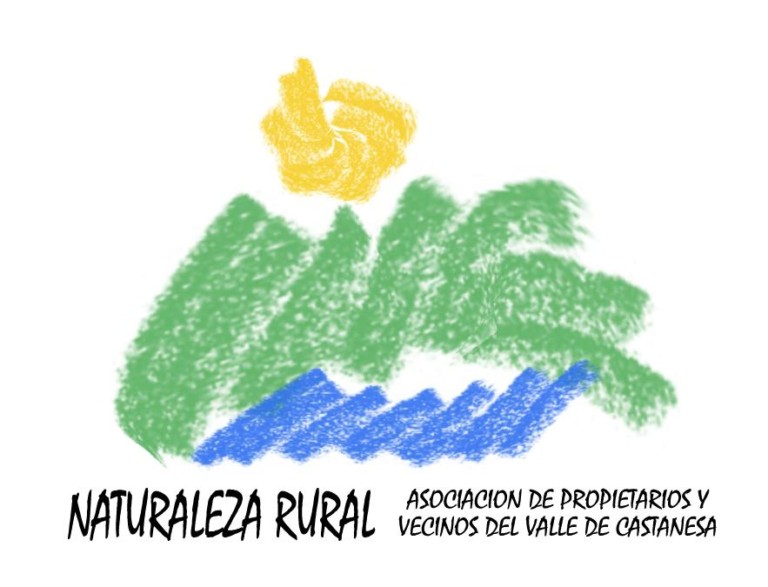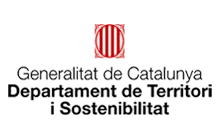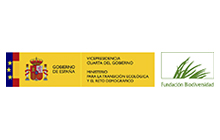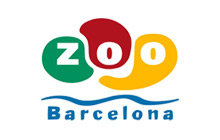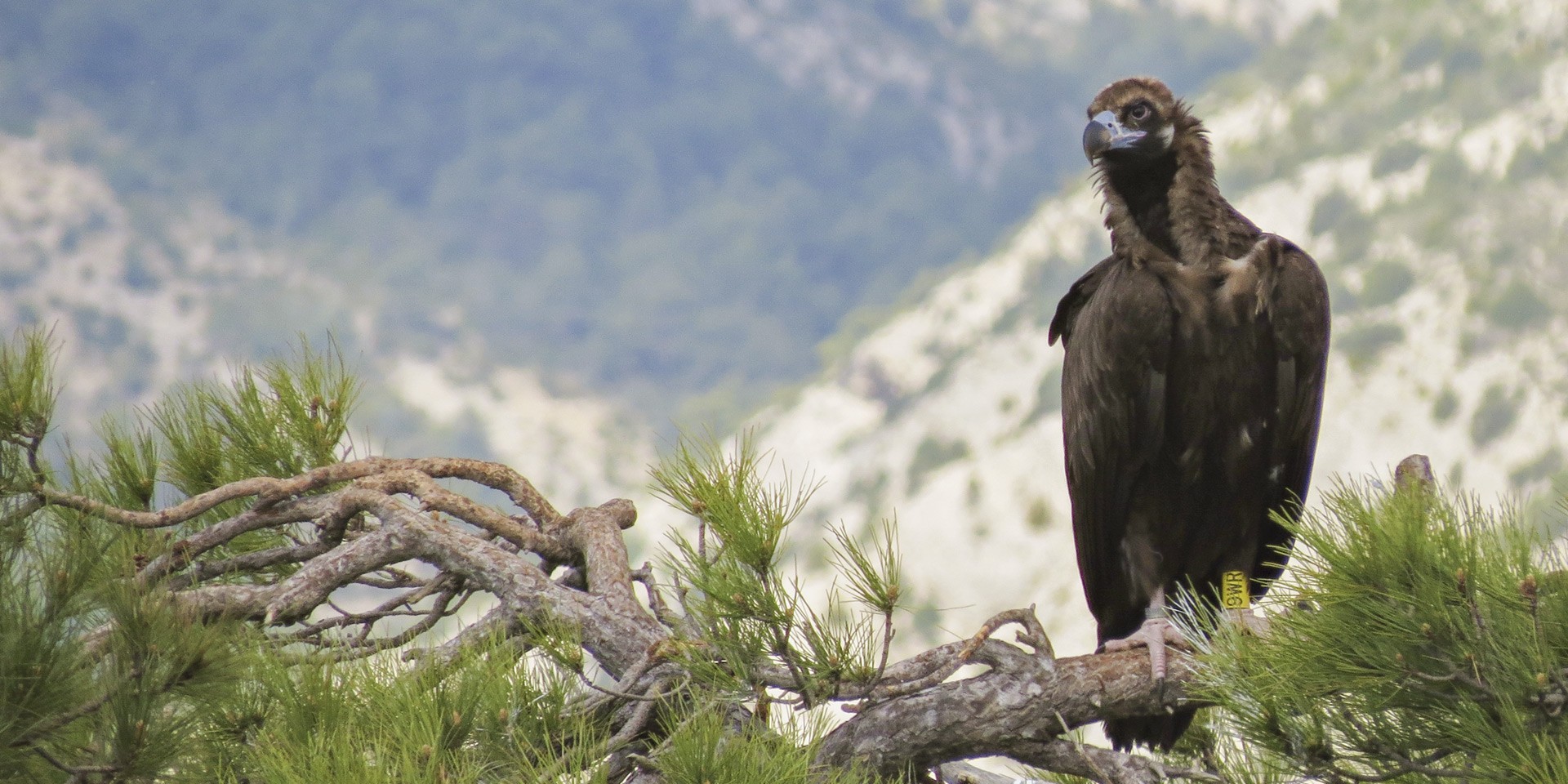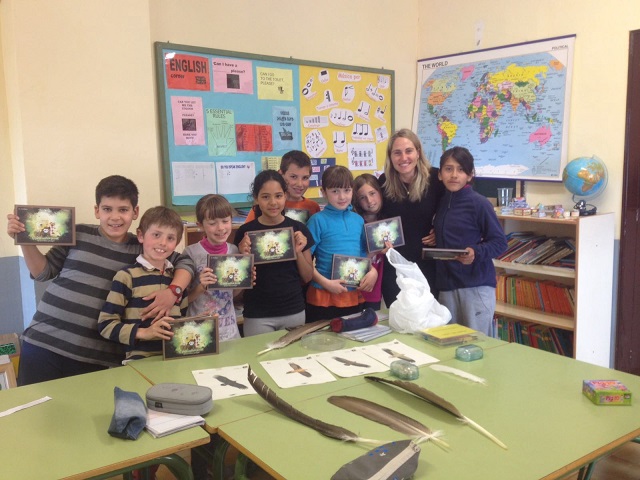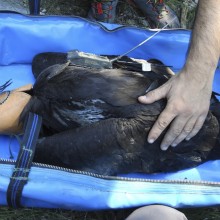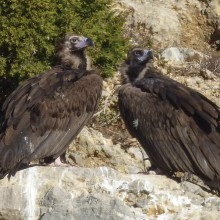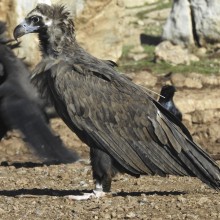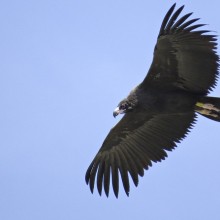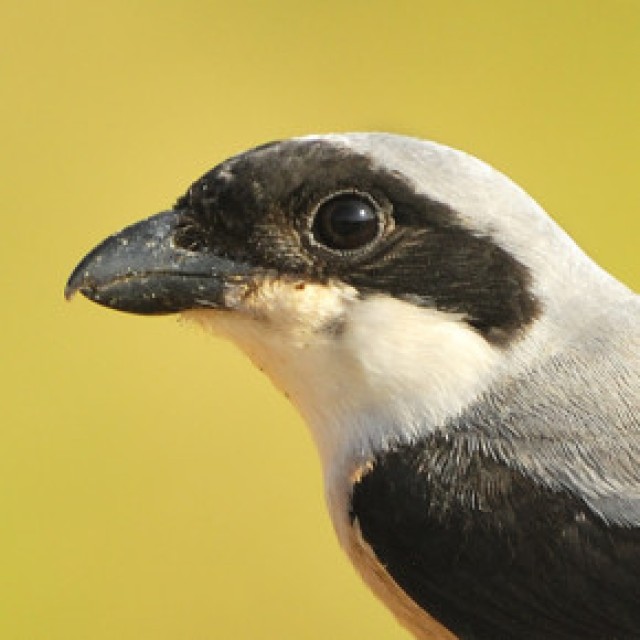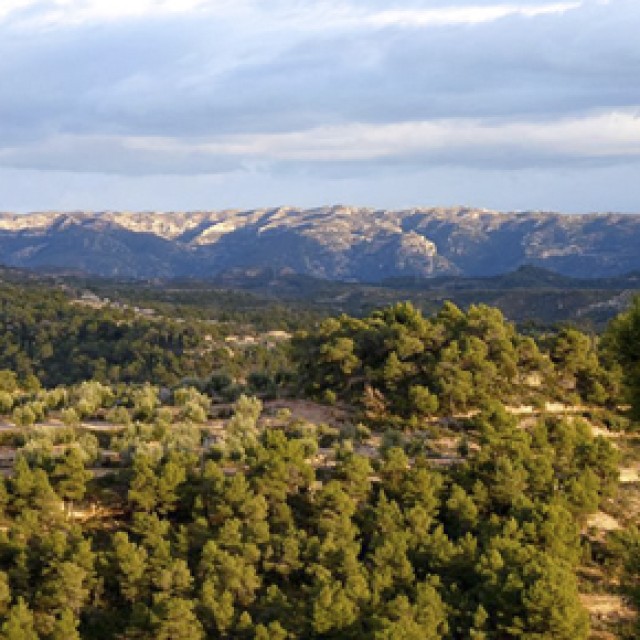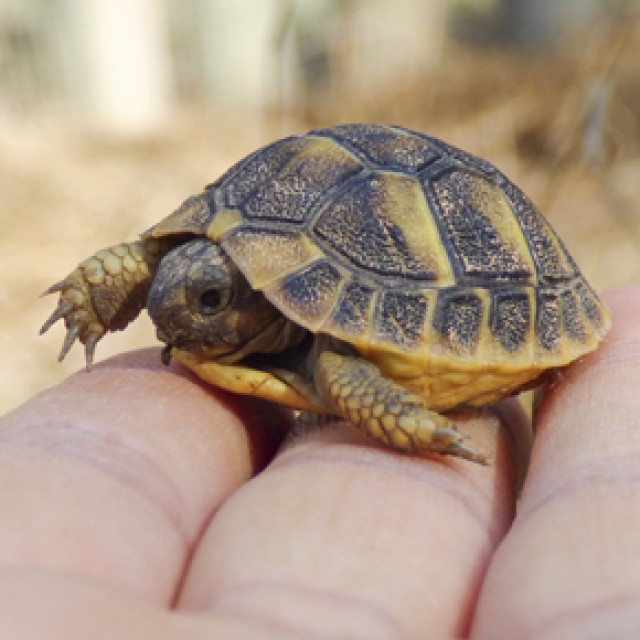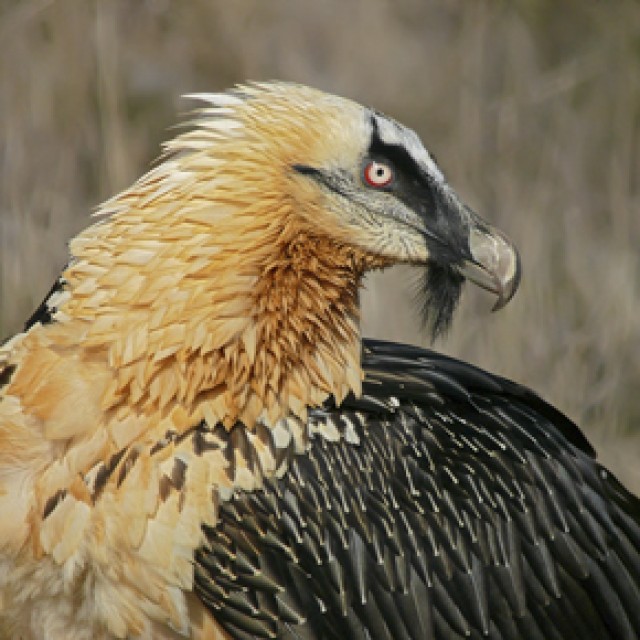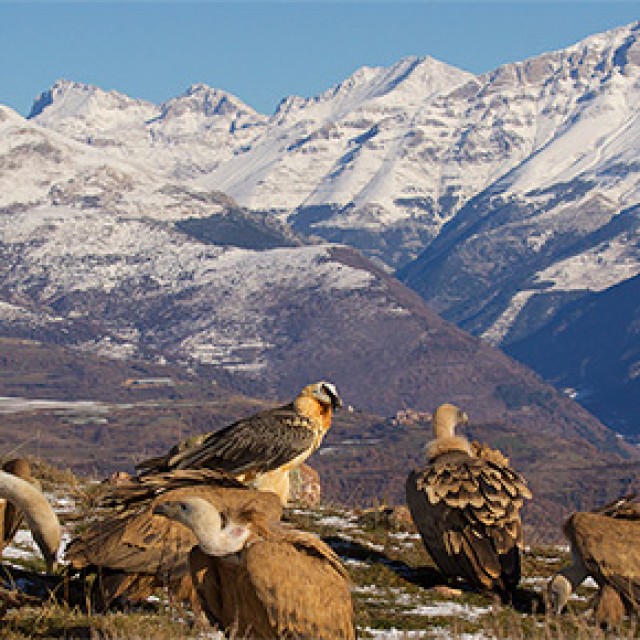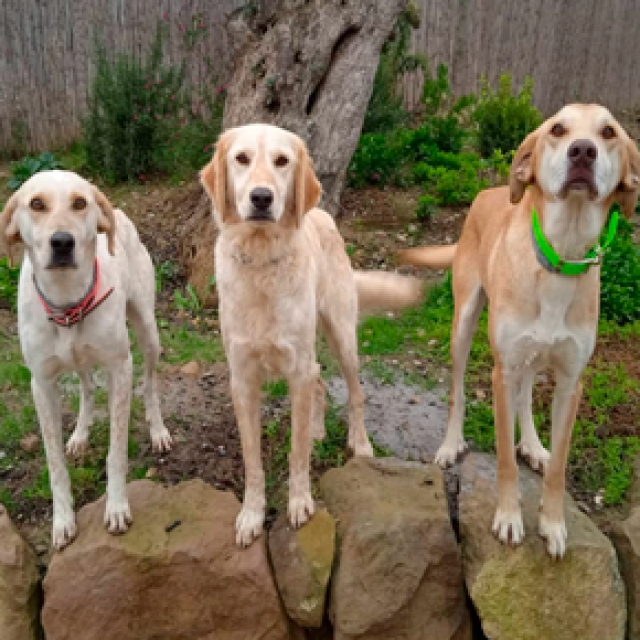The Black Vulture (Aegypius monachus) is one of the four scavenger raptors species that live in Europe, together with the Griffon Vulture, the Bearded Vulture (or Lammergeier) and the Egyptian Vulture. In contrast to its nearest relative, the Griffon Vulture, the Black Vulture nests in large tree crowns, in well conserved areas of forest, forming sparse colonies. Habitat destruction at the beginning of last century and campaigns of direct persecution were the causes that disappeared this bird of prey in much of Europe, including the north-est of the Iberian Peninsula. At present, the Black Vulture continues to be listed as vulnerable even though the Iberian population is slowly growing.

Landscape of the National Hunting Reserve (NHR) of Boumort, one of the reintroduction areas. © Boumort-Alinyà work-Team
The main goal of the reintroduction project of the Black Vulture in the Pyrenees is to help with recovery of the old range of the species, by establishing a population in the Catalonian Pre-Pyrenees (National Hunting Reserve of Boumort and Alinyà Natural Site), located halfway between the Iberian and French populations.
Origin of the reintroduced vultures
The released black vultures come mainly from wildlife rehabilitation centres, from the wildlife rehabilitation centre of Los Hornos (Cáceres), belonging to the Junta de Extremadura (Autonomous Government of Extremadura). A part of the birds comes from the Community de Madrid, admitted to the W. R. C. of GREFA.
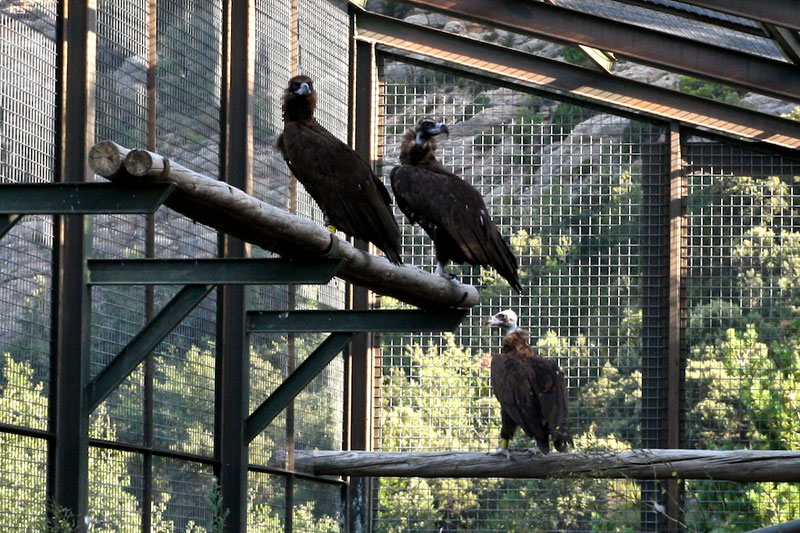
Before they are released, the black vultures remain in acclimatization facilities located in the reintroduction areas. © Boumort-Alinyà work-Team
They are juvenile or immature animals, that are admitted to the centres in a weak condition after they left the nest. They are rehabilitated and then transported to acclimatization facilities in the Pre-Pyrenees, where they remain for a variable period of time, about 8 or 9 months, before they are released.
Reintroduction area
The project is being carried out in Lleida Pre-Pyrenees (Catalonia, Spain) ans has got two releasing points: the National Hunting Reserve of Boumort and the Alinyà Natural Site, 30 km away from each other. The area is strategic for the connection between the French Black Vulture population and the Iberian one, as it is located right in the middle of those populations.
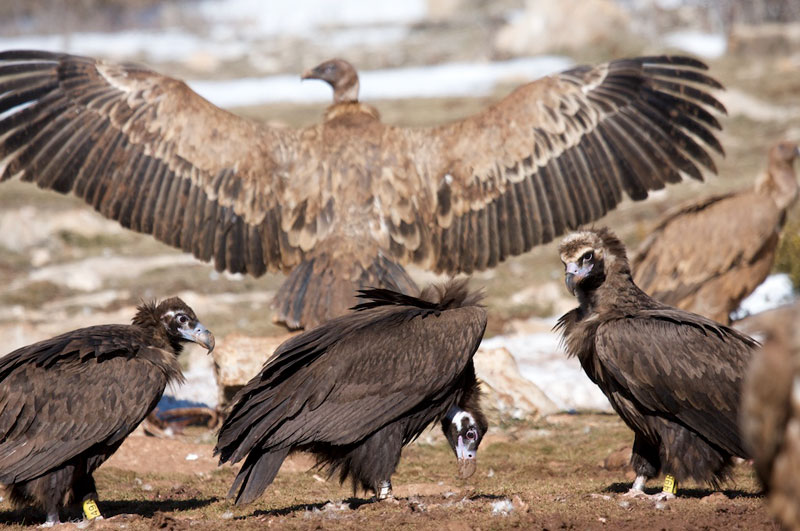
Three black vultures (Portell, Nouanda and Perla), in the Lleida Pre-Pyrenees. Portell and Perla were released through the reintroduction project; Nouanda was born in France and reached the area during her dispersion. © Boumort-Alinyà work-Team
The reintroduction area, as showed by the feasibility studies prior to the beginning of the project, has got ideal habitat (dense forest formations on steep slopes) and enough food (considerable livestock population, wild ungulates as well as feeding stations for scavenger birds) in order that the Black Vulture repopulates these Pre-Pyrenees mountains.
Other actions
In parallel with the releasing of Black Vulture specimens, other actions have been carried out necessary for the project to be successful. Among the most important, the expansion of the feeding station network for scavenger birds of prey near the releasing area stands up: Trenca has made and manages 3 supplementary feeding points (SFP) to strengthen ties between the reintroduced black vultures and the releasing area.
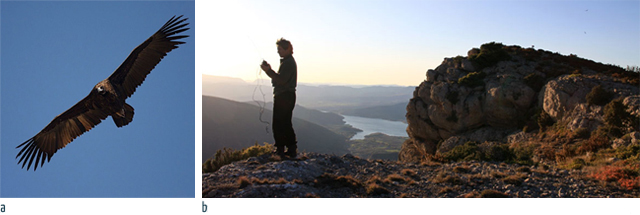
The released black vultures are marked using different techniques: descoloration of feathers (a), rings, terrestrial transmitters (b; technician radio-monitoring black vultures) and satellite transmitters (GPS). This allows us to identify very quickly the black vultures that are observed in the area, as well as knowing the exact whereabout of those vultures that have been released through the reintroduction project. © Boumort-Alinyà work-Team
Moreover, 47 artificial platforms have been built, similar to the Black Vulture nests, that encourage the birds to nest, and wild rabbit populations have been reinforced by building burrows and taking rabbits from other areas to Boumort. Besides, in the last 9 years more than 70 talks and conferences have been given in schools (more than 1000 children), universities, scientific meetings, etc.
To continue with this dissemination of the project has been edited a tale about the black vulture and the other species of necrophagous birds of the Pyrenees in 2016. The main objective of the tale is to provide an overview of the project and of these species among the regions of the area of influence.
With a first publication of 2000 copies and with the help of a technician in environmental education is spreading, free of charge, this tale among the students of higher cycle of primary school from the localities and regions of the Alt Urgell, Pallars Jussa, Pallars Sobira and La Noguera.
The edition of this tale has the support of Fundación Biodiversidad (Ministry of Agriculture, Food and Environment) and Naturaleza Rural.
Current situation of the project
Since the beginning of the project (2007), if we put together the inviduals released through the acclimatization facilities and the individuals released through hacking, including those from 2016, we have 70 black vultures have been released in the Pre-Pyrenees of Lleida.

One of the Black Vulture chicks born in the wild in 2012, still on the nest, doing some exercising for flying.
© Boumort-Alinyà work-Team
Furthermore, birds born already in the area have joined the Black Vulture stock of the Pre-Pyrenees. In the year 2010, the first nesting in the wild took place (the first in the Pyrenees for over a century), and the juvenile continues in the area. In 2011, 4 pairs started to nest in the wild, with no fledglings, which may be considered normal in a young colony. In 2012, 3 pairs started to nest and two fledglings were produced. In 2013, 5 pairs started to nest and three fledglings were produced. In 2014, 6 pairs started to nest and three fledglings were produced.The 2015 season began with 12 breeding pairs formed, 10 of them began to incubate, but only 5 survived to the incubation period and 3 are currently in the area.
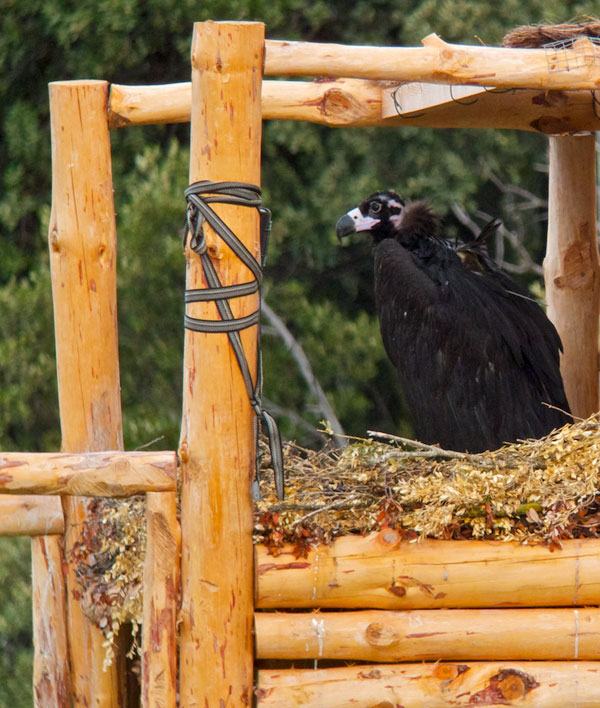
Black Vulture chick, already full-grown, on a hacking platform placed in one of the releasing points
© Boumor-Alinyà work-Team
In this 2016 11 breeding pairs have been formed and 10 of them began incubation. But for first time, since the first reproductions, have born and flown six chicks. Untill now we could not overcome the number of three chicks.
During these years of the project we have been able to fulfill one of the important targets of the project: the connection between the Catalan populations with the French and the south of the Iberian Peninsula populations. In 2016 there have formed three breeding pairs between individuals of the colony and Iberian exogenous individuals and a couple more formed by an individual of the colony and another French individual. From these four couples two chickens have been born.
The current colony, if we add the 8 juveniles from 2016 (six black vulture chicks were born into the wild in the Pre-Pyrenees of Lleida and two born in captivity and released in the area using the hacking technique), will be formed by 55 black vultures, 23 of them fixed to the colony and other 22 in the way to be fixed.
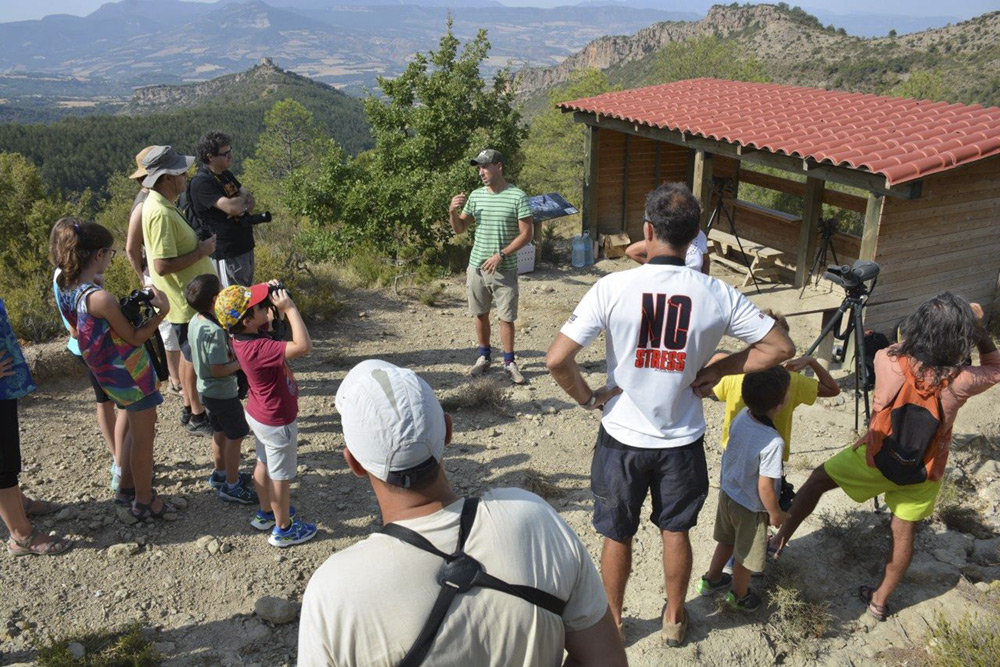
A visit to the project in one of the SFP (Supplementary feeding ponit) from Trenca Association in the pre-Pyrenees of Lleida. © David Izquierdo
You can find further information on the reintroduction project in the website: en.blackvulture-pyrenees.org/
With the collaboration of:
